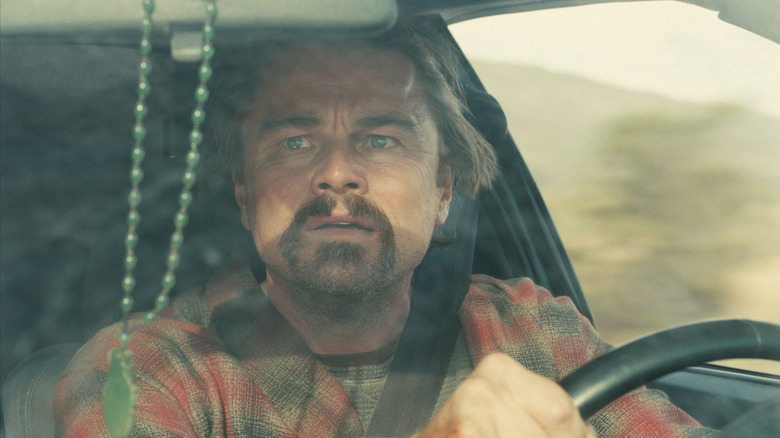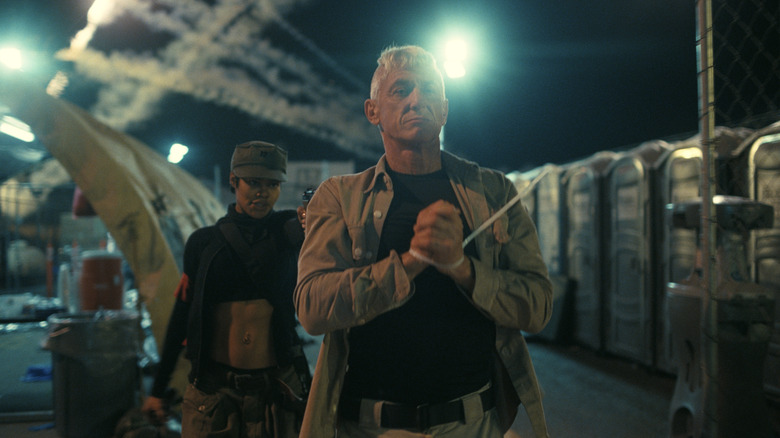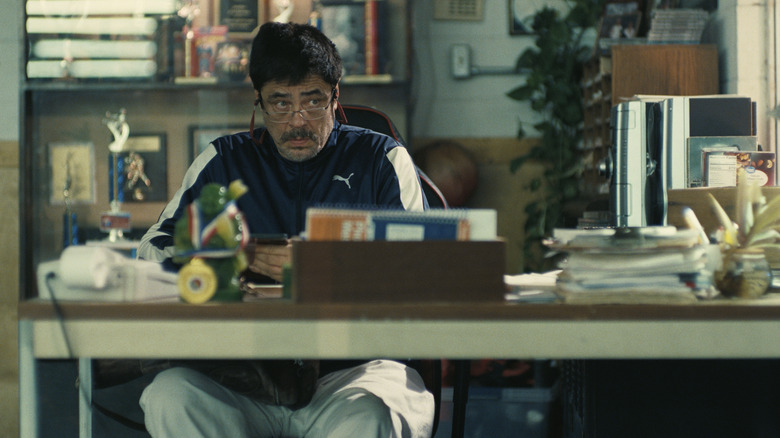Is One Battle After Another A Secret Sci-Fi Movie? Every Clue You Missed
The following contains spoilers for "One Battle After Another."
Paul Thomas Anderson is one of our finest directors. He's been responsible for incredible psychological dramas featuring dysfunctional characters who face great inner turmoil. What Anderson hasn't done, however, is make a big genre movie. Though he shares some initials with "Resident Evil" filmmaker Paul W. S. Anderson, PTA has never made a sci-fi film — until now? Maybe?
"One Battle After Another," Anderson's new epic, is a fiercely political action-comedy-thriller and the best movie of 2025 to date. The movie tells a story of revolutionaries who're forced to watch as time slips through their fingers and the dream they once fought for is crushed before their very eyes, all while the promise of a better future is stolen and buried in the ground. But not all is lost. 16 years later, there are still those who fight against tyranny to make things better, including people who fight the less flashy battles yet nevertheless risk it all to push the revolution forward before disappearing from the film's plot (not unlike the Choctaw vampire hunters in "Sinners").
Anderson has made one of the timeliest movies of 2025, as it captures the sense of anger and despair that's so prevalent today. And yet, "One Battle After Another" is rather vague when it comes to its timeline. Loosely based on Thomas Pynchon's "Vineland," the film definitely moves the action away from the source material's 1960s-1984 timeline, but to where? Though the prevalent sentiment seems to be that the movie starts out in the late 2000s and then jumps forward to the present day, there are some details that suggest Paul Thomas Anderson's latest actually starts in the present before moving ahead to the future. That's right: Anderson may have stealthily made his very first sci-fi film.
One Battle After Another may be a slightly futuristic movie
The first clue is more thematic than anything. "One Battle After Another" starts with the French 75, a revolutionary group, raiding a migrant detention center somewhere in California. If the movie was truly set 16 years ago, back in 2009, and followed a failed revolutionary movement, then it would make more sense for it to be inspired by the Occupy Wall Street movement rather than immigration. Yes, detention centers were prominent during the Obama years, but they didn't become the focus of this conversation until the Trump era.
Not too long after this raid, when Perfidia Beverly Hills (Teyana Taylor) is captured by cops following a botched bank robbery (in which the members of the French 75 specifically wear the type of surgical masks that've become widely used since the COVID-19 lockdowns), one of the revolutionaries takes a selfie with what very much looks like a modern smartphone with three lenses. This seems to imply the first act of the film takes place in the current present day, not before it.
When "One Battle After Another" jumps 16 years in the future, not a lot has changed, which tracks with how police states try to create an eternal present where the regime is eternal and unwavering (as the film argues). There's only one obvious example of technological change after this: the DNA test kit. Indeed, when Sean Penn's Lockjaw (the best movie villain of 2025) prepares to determine if Willa Ferguson (Chase Infiniti) is his daughter, he uses a futuristic-looking briefcase with an instant DNA testing device. This doesn't appear to be something that exists in the real world today, and while the movie doesn't linger on it, it's noticeably different from anything else we see in the film.
Why the timeline of One Battle After Another matters
Pynchon's "Vineland" is about how revolutions fail and leave things for the next generation to pick up. The book's timeline is very specific because it's commenting on how the 1960s' spirit of change and revolution died down, giving rise to the oppression and consumerism of the 1980s. "One Battle After Another" makes several changes to its source material, but the timeline may be the most significant.
If the movie does actually start in our present before jumping forward in time, it's offering a rather bleak and cynical view of our current situation — but not an entirely hopeless one. No, Paul Thomas Anderson isn't saying that resisting fascism in 2025 is a futile endeavor and we should just leave it to the next generation. Instead, the film specifically portrays different kinds of revolutionary movements and acts of resistance. Twice, it shows people directly confronting authorities to fight for justice — at the start, when the French 75 launches its detention center raid, and later when the people of Baktan Cross protest in the streets against Lockjaw's troops — and twice, it ends badly and in favor of the authorities. The French 75 are all betrayed and either captured or killed, while the Baktan protest is infiltrated by Lockjaw's forces and its participants are beaten up. But the underground resistance by Benicio del Toro's Sensei Carlos is much more successful and very clearly widespread.
"One Battle After Another" finished filming well before the 2024 U.S. presidential election, so the movie isn't explicitly talking about our current situation. Still, the timing of its release adds a layer of urgency to its message to resist, act, and build a community-based revolution that creates sanctuaries like Baktan Cross and legitimately helps people, even when everything seems dire. And sure, we may also have portable, instant DNA testing briefcases by the 2030s.
"One Battle After Another" is currently playing in theaters.


